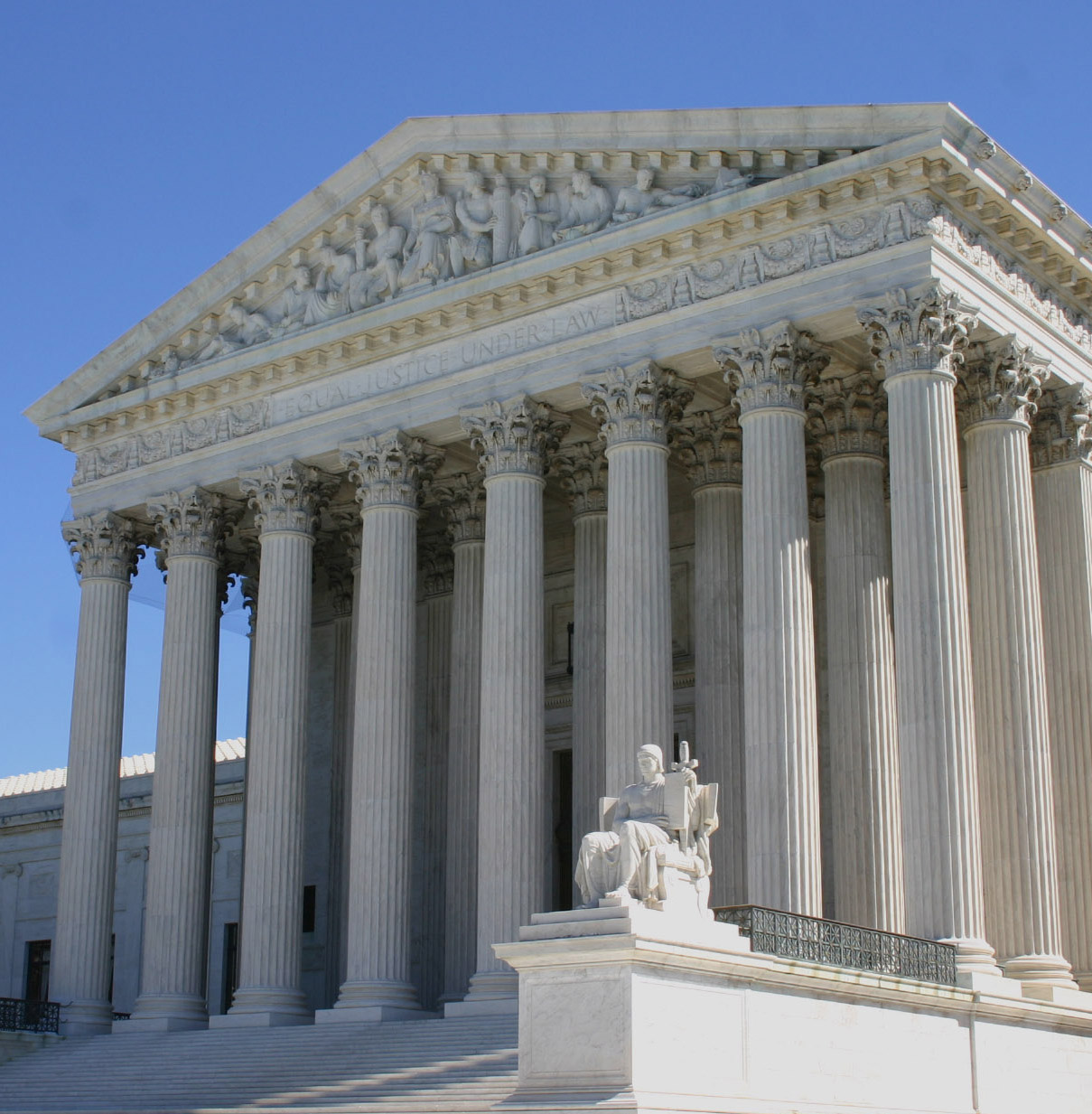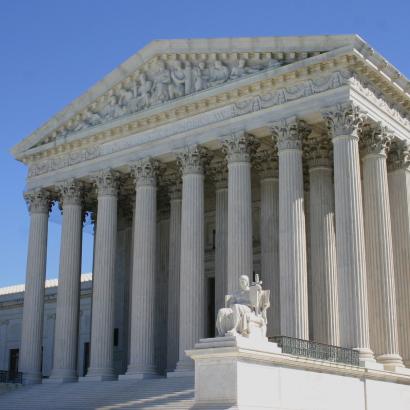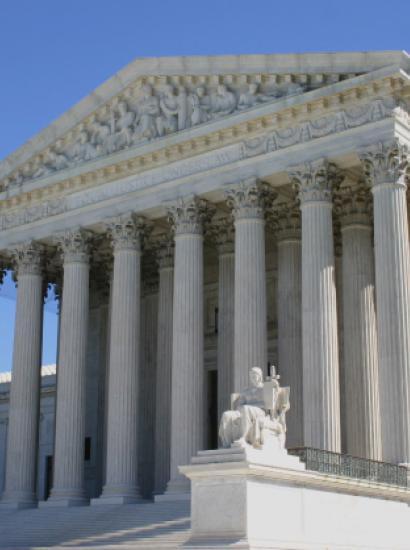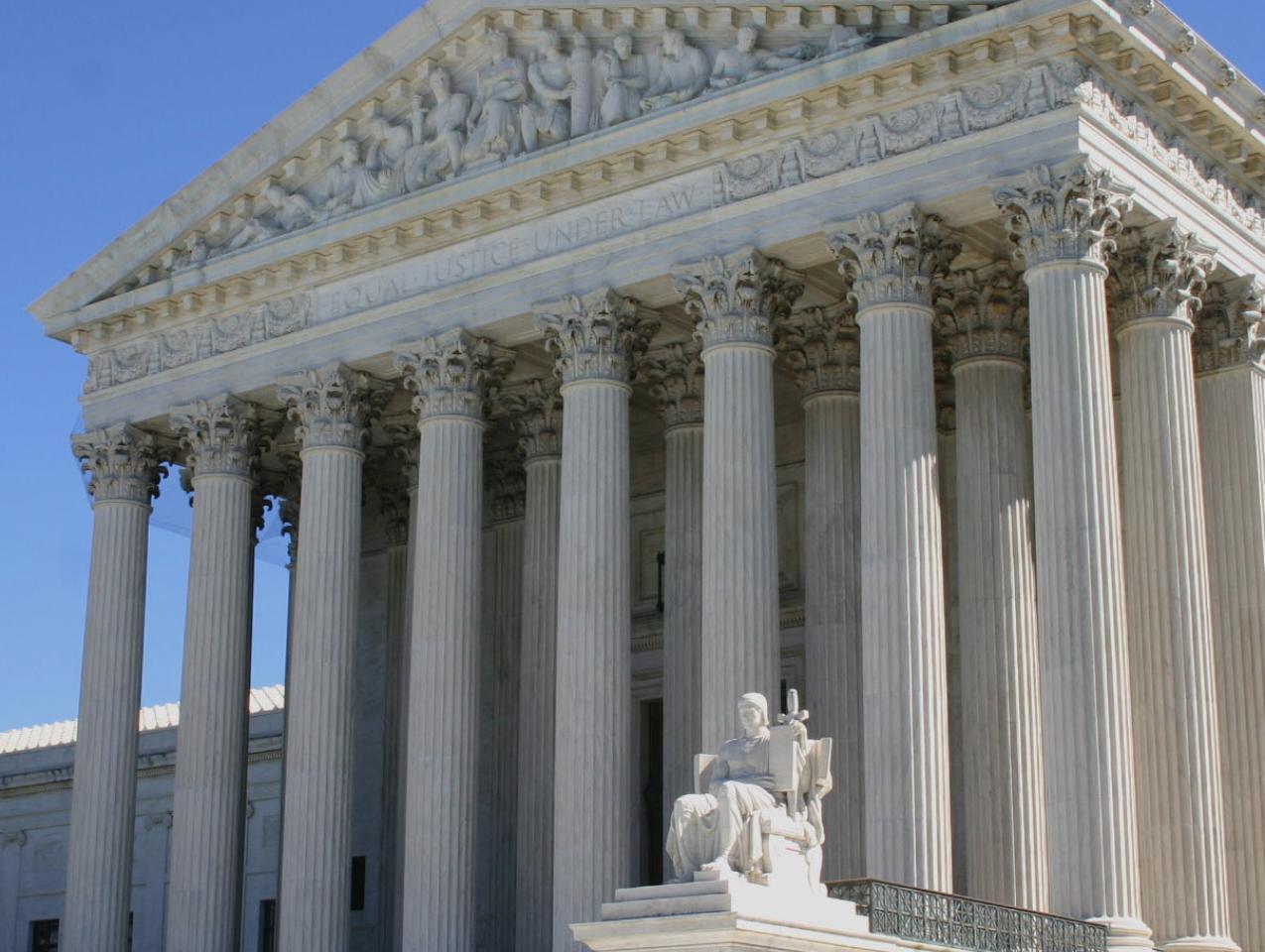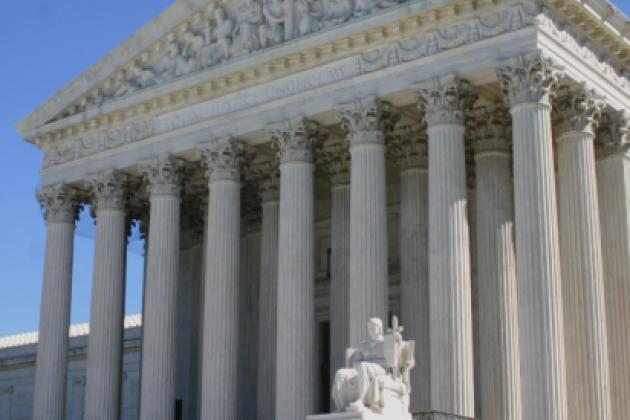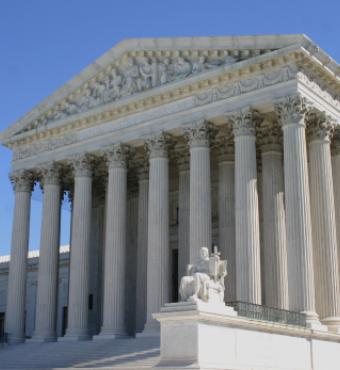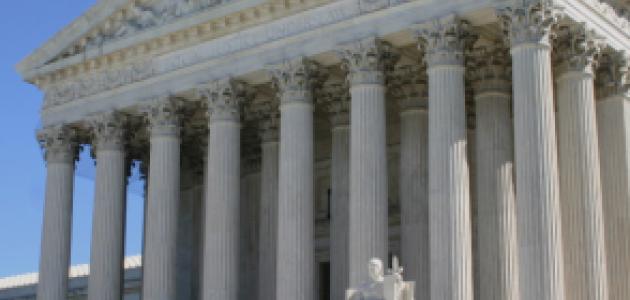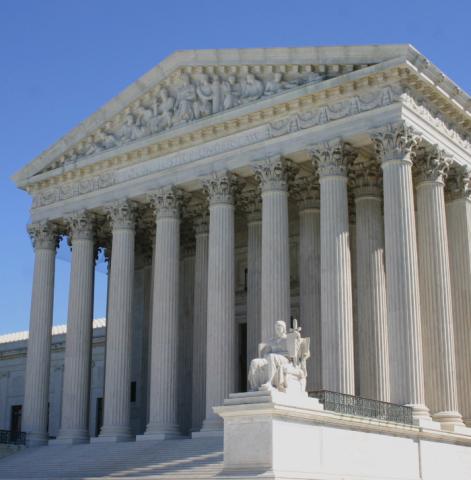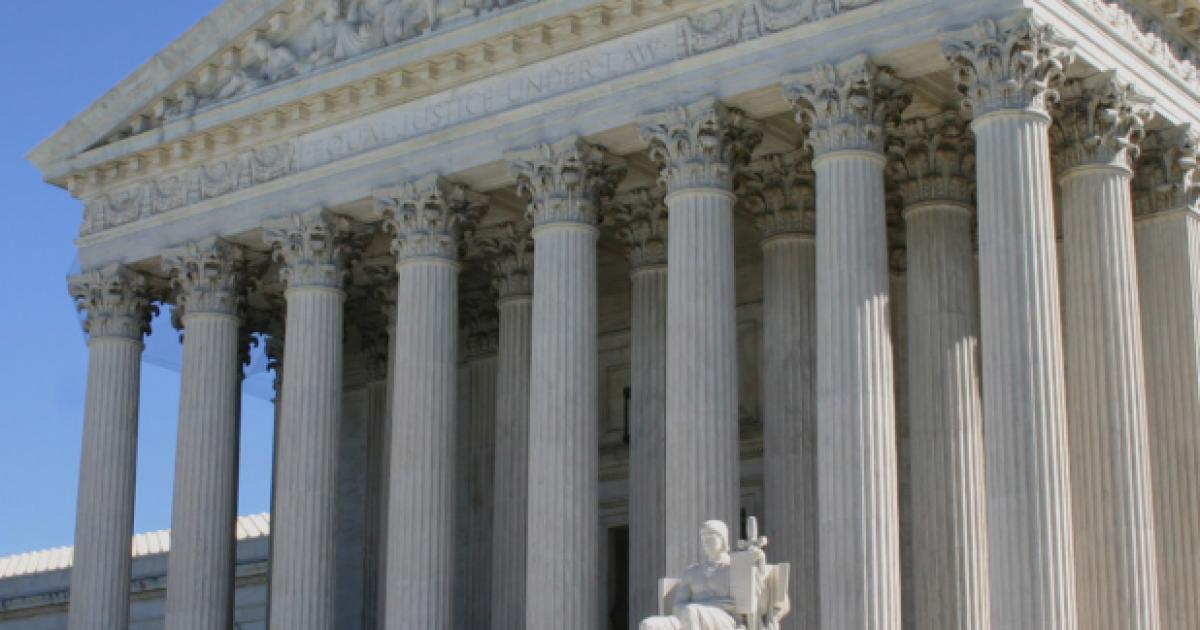- Law & Policy
This past week, by a narrow five-to-four decision, the Supreme Court decided the neglected but important case of Comptroller of the Treasury of Maryland v. Wynn. The question in Wynn was: may Maryland give only a partial tax credit to its citizens on out-of-state income that has been already taxed in the state where it was earned?
A peculiar feature of Maryland law divides its income tax into two components: one state and one county. Like other states, Maryland’s state tax credits the local citizen for the taxes paid elsewhere, so that the citizen only pays tax on the difference if Maryland’s tax rate is greater than the out-of-state rate. But even though Maryland also collects the county tax, it refuses to credit taxes paid elsewhere, thereby imposing a double tax on that portion of the out-of-state income. Justice Samuel Alito, writing for himself and the odd coalition of Chief Justice Roberts, and Justices Kennedy, Breyer and Sotomayor, struck down Maryland’s double taxation because it “is inherently discriminatory and operates as a tariff” on out-of-state income.
Justice Alito held that Maryland’s tax fell under the “negative” or “dormant” commerce clause (DCC). That odd phrase emerges from the convoluted Supreme Court jurisprudence over the proper scope of Congress’s Commerce power: “Congress shall have the power to regulate . . . commerce with foreign nations, among the several states and with the Indian tribes.” In its more familiar role, the Commerce Clause operates as a direct source of Congressional power. The modern New Deal interpretation dates back to National Labor Relations Board v. Jones & Laughlin Steel (1937) and Wickard v. Filburn (1942), both of which in my view stretch the language of the Clause far beyond its natural meaning to allow the United States to regulate all forms of manufacture, agriculture, and mining that takes place within any single state. In contrast, the correct interpretation, widely rejected today, restricts the scope of the clause to interstate transactions, i.e. those that involve two or more states, such as the shipment of goods, the transport of persons across state lines, or interstate communication.
The constitutional underpinnings of the dormant commerce clause are also suspect as a textual matter, because it leaves unexplained why the existence of the federal commerce power, standing alone, is sufficient to block state regulation or taxation on some matters even in the absence of any federal legislation that covers the state’s proposed field of action. In Wynn, Justice Scalia denounced the DCC as “a judicial fraud,” only to announce that he will strike down on DCC grounds only those state laws that explicitly discriminate against out-of-state parties, which the Maryland law does not. Justice Thomas does him one better, taking the view that the DCC should be scrapped.
Justice Kagan, in a strong opinion, attacked the majority on the more limited ground that current DCC doctrine did not require Maryland to abandon double taxation of its citizens’ out-of-state income. Unlike out-of-state residents, Maryland citizens can protect themselves within the political process. She therefore concluded that two people who earn the same amount of income could be required to pay the same amount for receipt of local services, even if one of them earned his income outside the state. The avoidance of double taxation was in her view not a trump that invalidated the Maryland scheme.
Wynn is a challenging case because its four major opinions examine the critical question whether the constitutional desire to forge a national union justifies the judicial creation of a constitutional law that has only shaky textual foundations. I know of no categorical way to answer that question. In this second-best world, much depends not only on the textual foundation of a particular doctrine, but also upon its substantive contribution, if any, to the well-being of the nation.
It is just here that we can see the strong contrast between the affirmative and dormant commerce clause cases. The expansive New Deal interpretation of Congressional power poses a serious threat to the integrity of our federal system. The central constitutional challenge of 1787 was to form a government strong enough to rule, but not so strong as to snuff out the liberties of its citizens. Limiting the affirmative power of the federal government to cross-border transactions had the salutary effect of using federalism to foster a unified competitive common market in which goods made in one state could be sold in another state in direct competition with local goods. The inability of the federal government to regulate the production of goods at its source thus blocked the dangerous creation of nationwide cartels.
The erroneous assertion of federal power in Jones v. Laughlin allowed the federal protection of nationwide unions that have long exerted their debilitating monopoly power, which in turn has let them launch crippling strikes and raise the costs of goods and services above competitive levels. Similarly Wickard v. Filburn sanctioned the organization of nationwide agricultural cartels that to this day shrink farm output and raise prices above competitive levels. Undoing both these decisions could only help restore the economic vigor of our flagging nation. The return to the original understanding facilitates the system of limited government championed by the founders.
In contrast, the DCC frees nationwide competitive forces from state disruption. Justice Scalia is quite correct to note that the case law on the DCC is far from the model of intellectual consistency. But the good news about key DCC clause decisions is that they have largely blocked provincial state rules of taxation and regulation from disrupting the national economy. It is therefore imperative not to focus on the close question raised by the Maryland tax scheme, but to place this case in its broader constitutional framework, by looking first at the really flagrant interferences with a nationwide economy that could luxuriate in the absence of the DCC.
Thus in Baldwin v. Seelig (1935), a unanimous Supreme Court invoked the DCC to strike down New York’s Milk Control Act, which required Vermont milk sellers to receive the same minimum prices for milk paid to New York producers in order to stifle interstate competition. “If New York, in order to promote the economic welfare of her farmers, may guard them against competition with the cheaper prices of Vermont,” the court held, “the door has been opened to rivalries and reprisals that were meant to be averted by subjecting commerce between the states to the power of the nation.”
That sentence was quoted in the important 1949 decision of Hood v. du Mond, where Justice Jackson—who had written Wickard some seven years before—struck down yet another New York dairy regulation that allowed New York’s Commissioner of Agriculture and Markets to deny a permit to Hood to expand his New York facilities to serve the Boston market on the ground that it was “against the public interest” because it tended “to a destructive competition in a market already adequately served.”
The DCC has thus advanced the overall vitality of the United States as an economic union by preventing states from using either overt or covert strategies to undermine cross-border competition. One technique the Supreme Court has used, albeit erratically, to serve this end is the so-called internal consistency test. Justice Scalia ridicules this judicial adoption of the German philosopher Immanuel Kant’s first formulation of the categorical imperative: “Act only according to that maxim whereby you can at the same time will that it should become a universal law without contradiction.” He insists that Kant’s insight bears no connection to “the text or structure” of the Constitution.
Score one for Kant, for Justice Scalia is mistaken on the structural issue, as illustrated by the 1987 case of American Trucking Associations v. Scheiner. Scheiner involved Pennsylvania’s flat axle tax levied on all heavy trucks that used Pennsylvania roads. That fixed figure gave an implicit subsidy to Pennsylvania trucks, which on average used Pennsylvania’s highways five times as often as trucks licensed elsewhere. Justice Stevens, over a Scalia dissent, struck the tax down because it flunked the internal consistency test, which asked what would happen if all other states adopted the same approach, to which the answer was that flat axle taxes would create the same kind of “rivalries and reprisals” that Cardozo identified in Baldwin v. Seelig. In contrast, a truck tax based on miles driven within the state gave no advantage to local trucks, if imposed by all states even at different rates. The Kantian formula has desirable practical implications.
Indeed the dangers of the Scalia position is evident from the earlier taxation case Moorman Manufacturing v. Bair, a 1978 case involving state taxation of firms that do business in multiple states. Virtually all states allocate tax burden by combining three measures: property, payroll, and sales. The Supreme Court, however, let Iowa compute its taxes on just one of these factors—sales within the state. That decision is correct if the DCC only reaches explicit forms of discrimination against out-of-state firms.
Note, however, the risk that this position holds. The use of the uniform three-part test meets the internal consistency standard. There are no competitive distortions if all states combine all three measures in the same proportions, no matter how each sets its combined rates. But once Iowa can deviate from this formula for some short-term revenue advantage, other states could follow suit with ad hoc formulas. Why open the door wide to strategic behavior, in the absence of any offsetting systematic advantage? Any state can reach its revenue target by using the standard tripartite formula. Yet it is manifestly difficult to get all states to agree to that formula voluntarily. Preserving the current equilibrium avoids that difficulty.
At this point, the trade-off seems clear. Justice Scalia and Justice Thomas ignore the enormous systematic advantage that comes from using the DCC to preserve an open common market within the United States. The longstanding use of the DCC should, as I have argued in my book The Classical Liberal Constitution, count as part of our “prescriptive Constitution,” precisely because the DCC advances the cause of nationwide competition. That laudable end is thwarted when Congress is given the power to regulate all aspects of local commerce, which it then uses to cartelize what would otherwise be competitive markets. Justice Scalia has his guns directed at the wrong judicial doctrine. Justice Thomas, to his credit, has long taken just this position on the affirmative commerce power, most notably in his concurrence in the 1995 Supreme Court decision in United States v. Lopez. Thus on taxation matters like those in Wynn, Justice Alito kept the DCC on course by striking down the Maryland tax.







